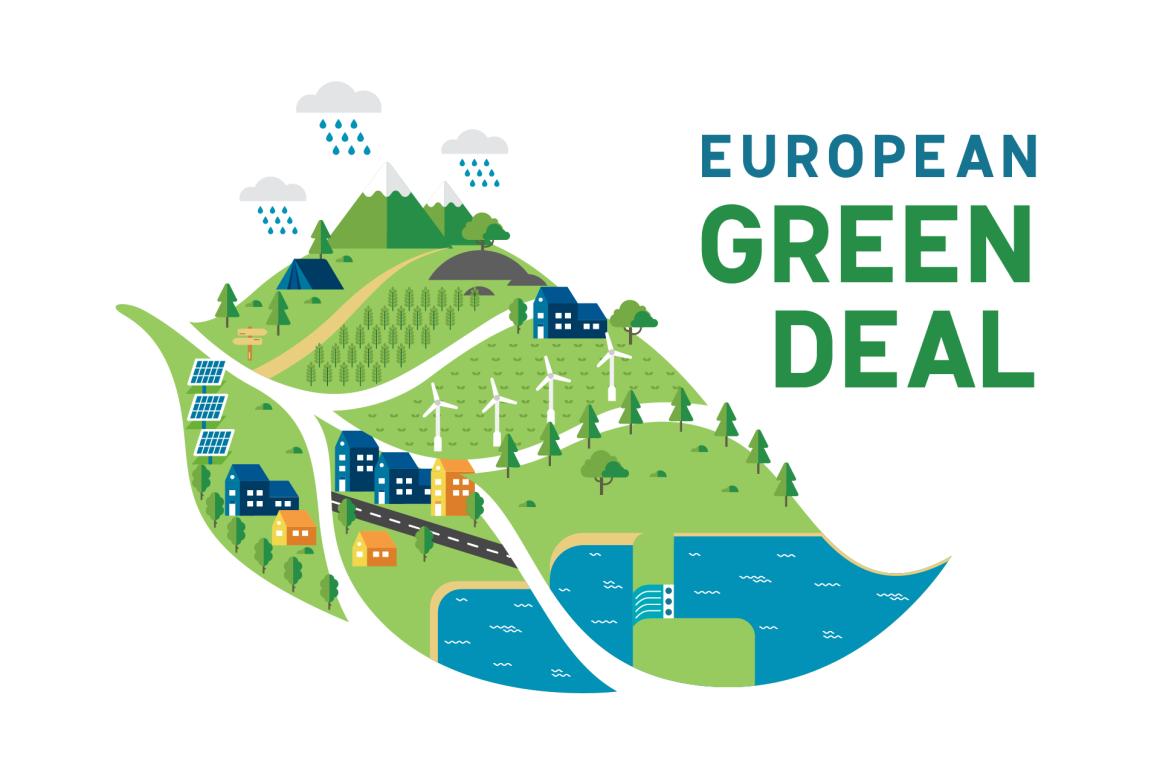

The climate emergency is no longer up for debate, the environment is deterring day by day, and we must radically change the society and the world in which we live.
In December 2019, the European Commission decided to tackle the challenge and announced its Green Deal for Europe. This action plan is Europe-wide and aims to make the EU the first climate-neutral continent by 2050.
In simple terms, achieving carbon neutrality means achieving a balance between the amount of CO2 released into the atmosphere and the amount of CO2 absorbed naturally by carbon sinks, i.e. any system that absorbs more carbon than it releases (forests, soils, oceans, etc.) |
There is a lot of information about the Green Deal. It is decoded in all directions and for all purposes. This article will allow you to understand the Green Deal in 5 key points, explained simply, and naturally.
1. Sustainable mobility
Taking action for the environment also means changing our lifestyle and our daily life. The transport sector represents 25% of the EU's total greenhouse gas emissions. To reach carbon neutrality, the EU has identified sustainable mobility as the first objective to be achieved.
In other words, the EU intends to:
Reduce greenhouse gas emissions from cars by 55% by 2030
Reduce greenhouse gas emissions from commercial vehicles (vans) by 50% by 2030
Achieving 0% greenhouse gas emissions from new cars by 2035
These major changes are possible thanks to the emergence of electric and hybrid vehicles.
The road transport sector is equally impacted by the Green Deal through the implementation of the CO2 emissions trading scheme from 2026 and the implementation of carbon pricing for the aviation and marine sectors.
2. Accelerate the energy transition
The energy transition will play a key role in achieving the carbon neutrality objective. Today, energy production and consumption account for 75% of the EU's greenhouse gas emissions.
The EU wants to decarbonize and transform its energy system towards cleaner energies such as hydrogen. To achieve this, the EU has set itself two objectives:
Increase the energy efficiency targets to 36% and 39%, which correspond to the loss rates between the energy produced and the energy consumed
To ensure that 40% of the European energy mix comes from renewable energies by 2030
3. Lead the 3rd industrial revolution and improve the energy balance of buildings
This energy transition represents a real opportunity for the European industrial sector. Sectors such as energy, transport, construction and renovation will be impacted by this third industrial revolution, creating new markets for clean technologies and products. This revolution will thus strongly contribute to creating sustainable and local jobs throughout Europe.
35 million buildings could be renovated by 2030
160,000 new "green" jobs in the construction sector by 2030
But beyond creating new jobs, this 3rd industrial revolution will drastically improve the energy balance of European buildings. The new Social Climate Fund will support European citizens most affected and most exposed to energy poverty to mitigate the costs to ensure that the transition is fair and just so that no citizen is left behind.
72.2 billion euros over 7 years for the renovation of buildings sometimes considered a thermal sieve.
The European Commission proposes the following:
The obligation for the EU Member States to renovate at least 3% of the total floor area of all public buildings each year
Setting a benchmark of 49% of renewables in buildings by 2030
Require the Member States to increase their use of renewable energy for heating and cooling by at least 1.1 percentage points each year, until 2030
4. Give biodiversity its rightful place
It is no longer a surprise that biodiversity is paying a heavy price in the fight against the climate crisis, yet it is our first ally against this threat. Increasingly threatened by pollution, deforestation and global warming, it is more than necessary to give biodiversity its rightful place.
To this end, the European Commission intends to increase the absorption capacity of carbon sinks from the current 268 megatonnes to 310 megatonnes of CO2. These figures are only achievable if the EU commits to a substantial effort in restoring forests, soils and wetlands.
5. Boost global climate action
This European-wide ecological pact is intended to provide a real global impetus for ecology. If Europe becomes the first climate-neutral continent, it will then become an example of good behaviour and inspiration for international partners and the rest of the world.
We can only solve the global threat of climate change by working with our international partners. |
The tone is set for the next UN's COP26 Climate Change Conference in Glasgow in November, where international partners will be able to see the EU's proposals and ideas for the green transition.


